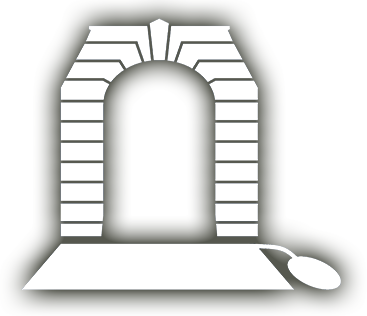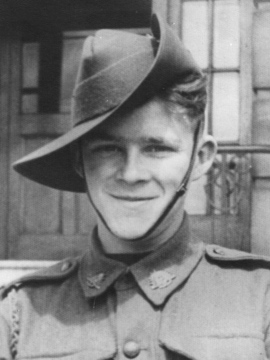
HORNE, Grattan Dennis
| Service Number: | TX8103 |
|---|---|
| Enlisted: | 26 August 1941 |
| Last Rank: | Private |
| Last Unit: | 2nd/10th Field Company / Squadron RAE |
| Born: | Wynyard, Tasmania, Australia , 12 August 1920 |
| Home Town: | Deloraine, Meander Valley, Tasmania |
| Schooling: | Not yet discovered |
| Occupation: | Clerk |
| Died: | Illness, Borneo, 5 November 1944, aged 24 years |
| Cemetery: |
Labuan War Cemetery Section N, Row A, Plot 13 |
| Memorials: | Australian War Memorial Roll of Honour, Ballarat Australian Ex-Prisoners of War Memorial, Bendigo Sandakan Prisoner of War Memorial, Deloraine Memorial Gates |
World War 2 Service
| 3 Sep 1939: | Involvement Sapper, TX8103 | |
|---|---|---|
| 15 Feb 1941: | Imprisoned Malaya/Singapore, Died in Japanese custody as a POW | |
| 16 Feb 1941: | Transferred Australian Military Forces (WW2) , Sapper, 2nd/10th Field Company / Squadron RAE | |
| 26 Aug 1941: | Enlisted Australian Military Forces (WW2) , Private, TX8103 |
Help us honour Grattan Dennis Horne's service by contributing information, stories, and images so that they can be preserved for future generations.
Add my storyBiography contributed by Ian R SMITH
Grattan Horne was born at Wynyard, Tasmania, in 1920, a son of Cyril Dennis and Laurel. He was a single clerk when he enlisted in the Second Australian Imperial Force at Hobart on 26 August 1941, aged 21. His father Cyril had served in the First World War initially as a soldier with the 4th Pioneer Battalion, rising to the rank of major in that unit, and had been awarded the Military Cross and French Croix de Guerre. Grattan’s father had himself joined the Second AIF in March 1940, and at the time of Grattan’s enlistment was serving as a major commanding the 1st Australian Corps Guard Battalion in the Middle East. He was later promoted to lieutenant colonel and commanded the 2/1st Guard Battalion in various places in the Pacific theatre from 1943 to the end of the war.
After recruit training and then engineer training at Bonegilla, Grattan was posted to the 2/10th Field Company, Royal Australian Engineers as a reinforcement. A field company usually supported an infantry brigade in the field, undertaking more complex engineering tasks such as building bridges, clearing minefield and building fortifications. On 10 January 1942, Grattan embarked at Sydney and disembarked at Singapore on 26 January. Just over two weeks later, the Allied forces at Singapore surrendered to the Japanese and Grattan became a prisoner of war. In July, Grattan was among the 1,494 Allied POWs that made up B Force, a group of 8th Division troops which was transported to Sandakan on the eastern coast of Japanese-occupied North Borneo on the tramp steamer Ubi Maru, and arrived at Sandakan on 18 July. Over 2,000 Allied POWs were held at Sandakan camp, and they were employed in airfield construction. Grattan was officially posted as missing until March 1943 when he was reported as a prisoner of war in Borneo. On this day in 1944, Grattan died of malaria and meningitis while in Japanese custody at the Sandakan camp. He was initially buried near the camp, but after the war the Australian Army Graves Service considered the area to be too prone to flooding for a permanent cemetery, so disinterred all the remains and reinterred them at Labuan War Cemetery. Unlike many of the dead at Labuan, Grattan’s grave is known and marked with his name and details.










